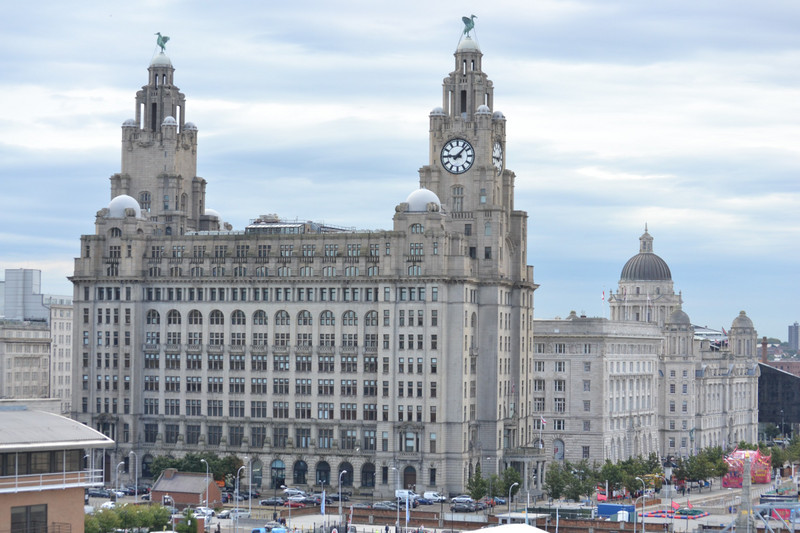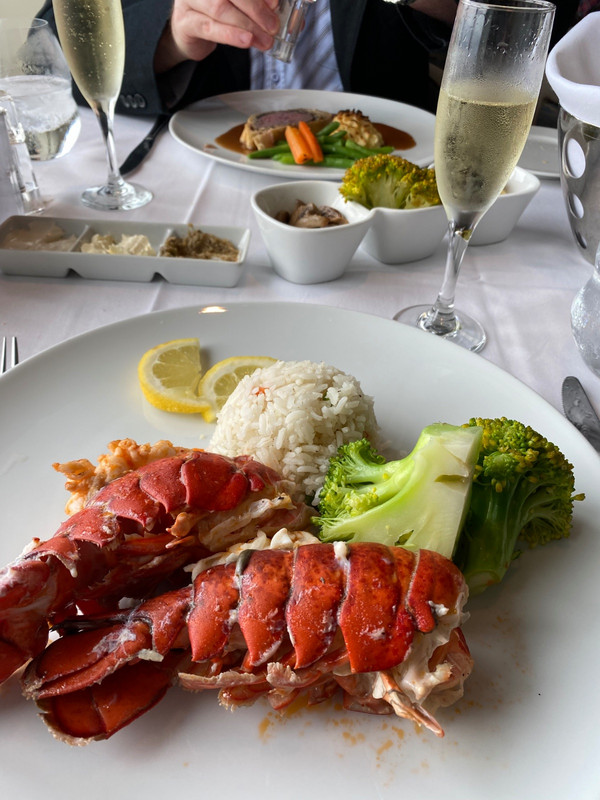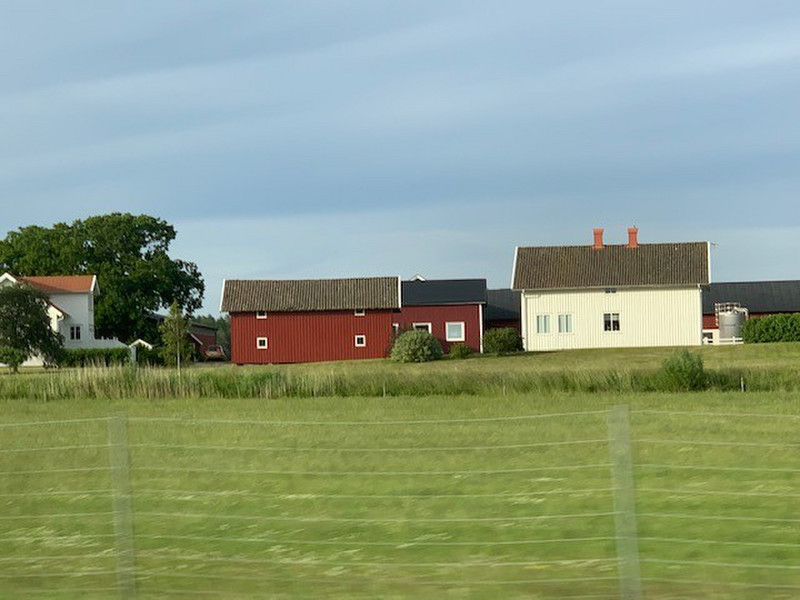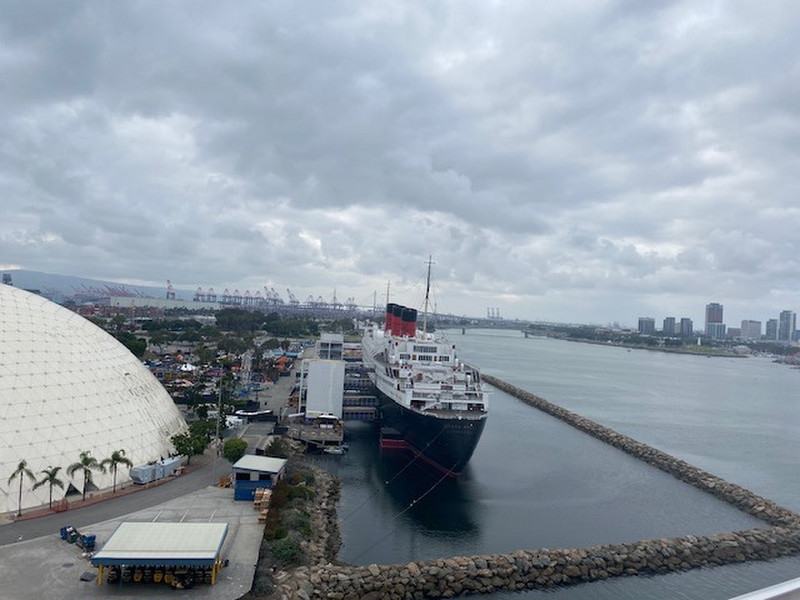The Three Graces. Royal Liver Building. Built in Pier Head. Office building. Aubrey Thomas. Concrete frame with granite cladding. 8 storeys, and 2 storeys of attics. 9 bays, returns. Front has 4 giant buttress/projections each of 1 bay width, the middle 2 framing a portico of Ionic columns with balustraded parapet; a smaller projecting window above with shield of arms and Ionic columns. Ground and 1st floors rusticated. Ground floor has windows. Upper floors to 2nd, 3rd, 7th and 8th bays recessed behind parapet and scrolls. Windows with mullions and transoms of 3 lights. Those to projecting bays with transom only. Those to 5th and 6th floors in round headed recesses with balconies. Top floor recessed behind Doric colonnade. Frieze and bracketed cornice. Receding attics with parapets. Roof piled up with turrets and domes in receding stages. Clock towers with copper liver birds on top. Iron railings and stone piers all round at base. One of the 1st concrete framed buildings in the world. Grade II listed building. List entry Number: 1356370. Liverpool – Maritime Mercantile City UNESCO World Heritage site. DSC_0979
After our sojourn in Ireland, Caribbean Princess returned to the UK where our next port of call was Liverpool. Liverpool was a city I very much wanted to visit. My had sailed from here for America. Several of my ancestors lived or were married here. Caribbean Princess docked at the Liverpool Cruise Terminal, the latest iteration of the Liverpool Landing Stage. The location is ideal, adjacent to Pier Head, with a view of the Three Graces World Heritage buildings and downtown Liverpool.
Liverpool has heartily embraced the cruise ship business, as evidenced by dockside greetings by the Liverpool Ukulele Orchestra and the costumed Town Crier. Walking across Pier Head towards the reimagined Albert Dock, we noted the old and new. There are the imposing Three Graces: the Royal Liver Building, Cunard Building and Port of Liverpool building; all built between 1904 and 1916. The Port of Liverpool building retains its original use, but the other two have been repurposed, the Cunard Building as the British Music Experience and the Royal Liver Building as a general (albeit prestigious) office building. On Pier Head are also several modern buildings, part of the Liverpool docks revitalization scheme. The Museum of Liverpool is
Waterloo Warehouse at East Waterloo Dock. Built as a corn warehouse. Adaptive reuse as Waterloo Apartments. Warehouse. 1867. George Fosbery Lyster. Brick, with granite base and limestone ground floor, 6 storeys and 43 x 5 bays. Rusticated ground floor of open stone segmental arches and square piers. Shallow barrel vaults underneath, on 4 rows of piers. 5 loading bays and 2 hoist towers with pedimented gables. Paired windows have iron frames, louvered with round window above. Bands at sill levels. Parapet and cornice Grade II listed building. List entry Number: 1062576. DSC_0003
We spent considerable time seeing the Albert Dock, dedicated by Prince Albert in 1846. The square suite of warehouses surrounding a basin was renovated in as a residential, retail and and rededicated by Prince Charles. Of particular note to visitors at the Albert Dock are the Merseyside Maritime Museum, the International Slavery Museum, the Tate Liverpool and the Beatles Experience. Pier Head, the Albert Dock and St. Nicholas Church are all part of the Liverpool Maritime Mercantile City UNESCO World Heritage site.
The International Slavery Museum shares space in the Albert Dock with the Merseyside Maritime Museum, occupying the third floor. The displays are powerful, and hold nothing back to tell the story of the Atlantic slave trade. Liverpool was a centre of the slave trade, with many slave ships sailing from its port. That is why Liverpool to tell the story of the salve trade and its aftermath. The museum is arranged in three sections: Life in West Africa; Enslavement and the Middle Passage; and Legacy.









